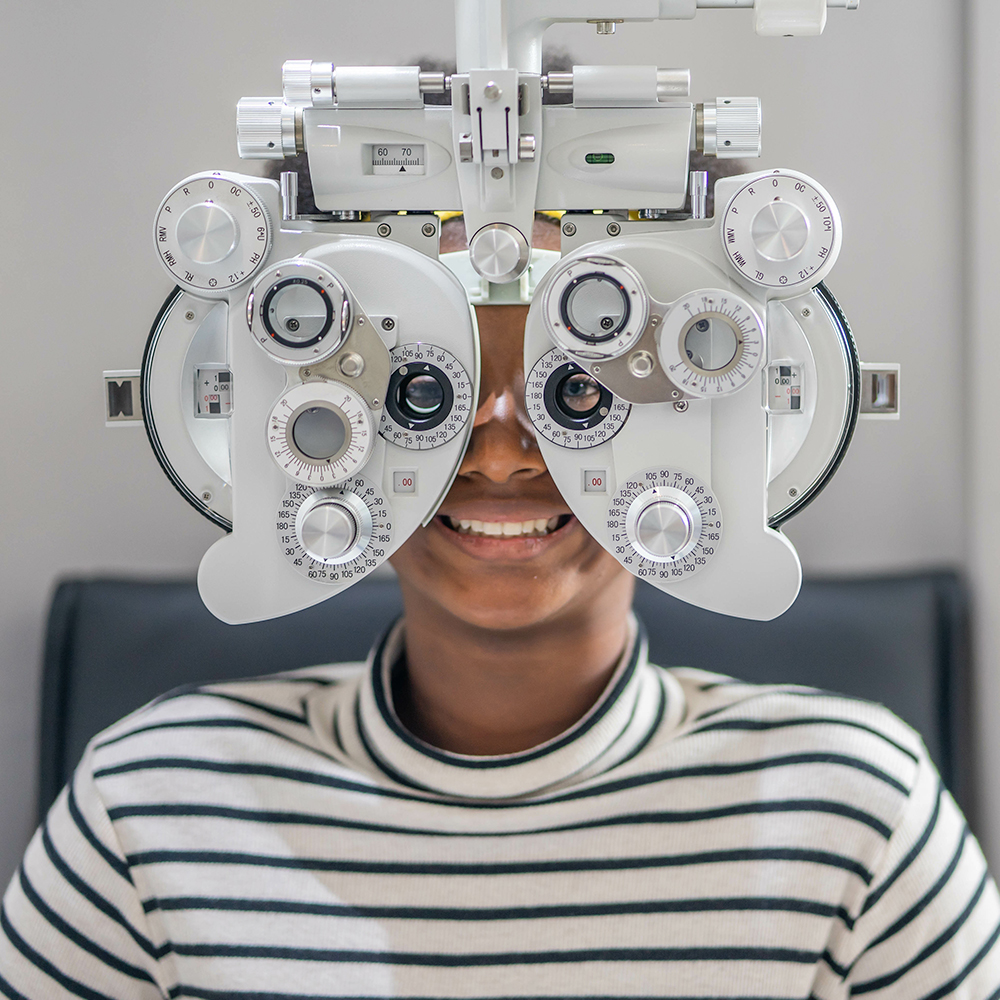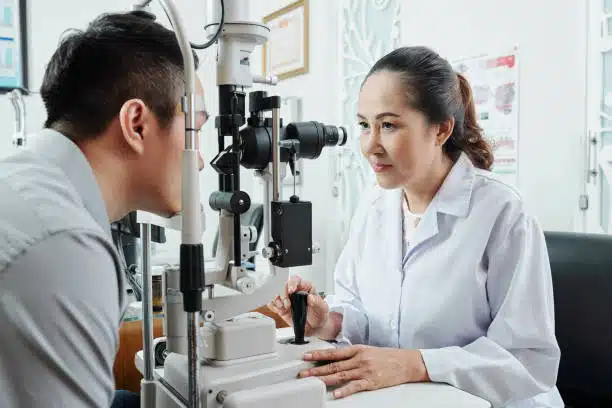Find a Trusted Optometrist Chino for Family Eye Treatment Solutions
Find a Trusted Optometrist Chino for Family Eye Treatment Solutions
Blog Article
Checking Out the Latest Technological Innovations in Optometry and What They Mean for Eye Doctors
From the accuracy of Optical Comprehensibility Tomography to the nuanced insights supplied by AI-driven analysis tools, these technologies are setting new criteria in client analysis and therapy. As these developments penetrate the technique, optometrists are faced with the obstacle of accepting these tools to improve patient outcomes.
Developments in Diagnostic Devices
Advancing the area of optometry, innovations in diagnostic devices have reinvented the means eye treatment specialists assess and diagnose visual disabilities and ocular conditions. The previous decade has observed significant technological developments, making it possible for even more exact and detailed analyses. Optical Coherence Tomography (OCT), for example, gives high-resolution cross-sectional pictures of the retina, enabling the early detection of diseases such as glaucoma and age-related macular deterioration. This non-invasive imaging technique has actually ended up being crucial in modern optometric technique.
One more trick development is the intro of innovative corneal topography systems, which map the surface curvature of the cornea with precision. These tools are particularly advantageous for suitable call lenses and diagnosing corneal disorders. Electronic retinal imaging has changed traditional ophthalmoscopy, providing in-depth, scenic sights of the retina that facilitate complete aesthetic evaluations.
The advancement of wavefront aberrometry has additionally been crucial, allowing the analysis of refractive mistakes with unequaled accuracy (Opticore Optometry). This innovation aids in customizing corrective lenses and enhancing surgical outcomes for refractive surgical treatments. Jointly, these diagnostic developments equip optometrists to provide exceptional individual care, ensuring early intervention and customized therapy approaches, inevitably boosting aesthetic wellness results
AI in Individual Administration
Building on the foundation of sophisticated analysis devices, the unification of expert system (AI) in person administration represents a transformative jump for optometry. AI systems are progressively used to boost performance, accuracy, and customization in individual care. By assessing substantial quantities of data, AI can identify patterns and predict prospective ocular problems, allowing eye doctors to tailor interventions more effectively. This ability is vital in handling chronic eye illness such as glaucoma and diabetic retinopathy, where very early detection and continual tracking are essential.
Furthermore, AI-driven systems help with structured individual communications and administrative procedures. Automated organizing, digital examinations, and customized follow-up plans not only enhance patient satisfaction however additionally enhance time monitoring for professionals. These systems can triage patients based upon the urgency of their problems, making certain that those in important demand get punctual attention.
Additionally, AI improves decision-making by providing optometrists with evidence-based suggestions and therapy pathways. By integrating data from electronic wellness documents, AI tools use understandings that notify scientific choices, lowering the risk of errors and enhancing individual end results. As AI proceeds to progress, its duty in person management will likely expand, reshaping the landscape of optometric care.
Breakthroughs in Retinal Imaging
In the realm of optometry, retinal imaging has experienced amazing technical advancements that are improving analysis capabilities and person care. Advancements such as Optical Coherence Tomography (OCT) and fundus photography have actually reinvented how optometrists picture and evaluate the retina. OCT, particularly, provides high-resolution, cross-sectional photos of the retina, enabling the detailed examination of its layers. This capacity is invaluable for very early discovery and management of problems like glaucoma, diabetic person retinopathy, and age-related macular deterioration.
Improved imaging modalities like OCT angiography are additional refining analysis precision. Eye Doctor. Such advancements assist in the recognition of minute retinal modifications that could symbolize condition progression.
Additionally, improvements in man-made knowledge are augmenting retinal imaging by enabling automatic evaluation of large datasets. These systems assist eye doctors in identifying patterns indicative of pathology, consequently enhancing analysis accuracy and effectiveness. Jointly, these advancements are transforming retinal imaging into a cornerstone of contemporary eye treatment, boosting outcomes and expanding therapeutic possibilities.
Teleoptometry's Expanding Duty
Teleoptometry is progressively ending up being a vital component of eye treatment, driven by improvements in digital interaction and analysis tools. This is particularly advantageous in underserved and country areas where accessibility to specialized eye treatment is usually minimal.
The combination of synthetic knowledge (AI) additional enhances teleoptometry, making it possible for the analysis of aesthetic data and aiding in the discovery of ocular problems such as glaucoma and diabetic person retinopathy. AI-powered formulas can rapidly analyze complex imaging data, supplying eye doctors with important understandings that boost professional decision-making.
Moreover, teleoptometry supports continuity of care through smooth integration with digital wellness records (EHRs), Read Full Report enabling optometrists to keep comprehensive client go to this web-site backgrounds. This makes sure that individuals get consistent and tailored care also when consulting with different experts.
In spite of these benefits, challenges stay, consisting of making certain information safety and security and handling person assumptions. Teleoptometry stands for a considerable stride in the direction of even more accessible, efficient, and patient-centered eye care. As modern technology evolves, its role is poised to expand additionally.

Future Patterns in Eye Care
A myriad of ingenious patterns is established to reshape the future of eye care, driven by technological advancements and the advancing demands of patients. One substantial trend is the combination of man-made intelligence (AI) in diagnostics, which promises to enhance the accuracy and efficiency of eye assessments. AI formulas can assess large amounts of information from retinal pictures, potentially identifying problems like diabetic retinopathy and glaucoma earlier than traditional approaches.
Additionally, customized medicine is obtaining grip in optometry, with hereditary screening notifying customized therapy plans. This strategy aims to optimize individual end results by customizing interventions to specific genetic accounts. Wearable modern technology, such as wise contact lenses, is additionally imminent, supplying real-time tracking of intraocular pressure or sugar levels, therefore offering continuous insights into eye and systemic wellness.
The adoption of increased truth (AR) and virtual truth (VIRTUAL REALITY) in training and patient education is an additional emerging pattern. These modern technologies supply immersive experiences that can enhance understanding and abilities both for clients and eye doctors. As these trends progress, eye doctors should remain abreast of technological advancements to supply sophisticated care, making certain improved client results and contentment in the dynamic landscape of eye treatment.
Verdict

Collectively, these analysis advancements encourage optometrists to supply premium published here individual care, guaranteeing early treatment and tailored treatment methods, inevitably improving aesthetic wellness results.

As these technologies proceed to advance, optometrists should adjust and incorporate them into practice, eventually enhancing operations efficiency and raising the criterion of eye treatment provided to people.
Report this page